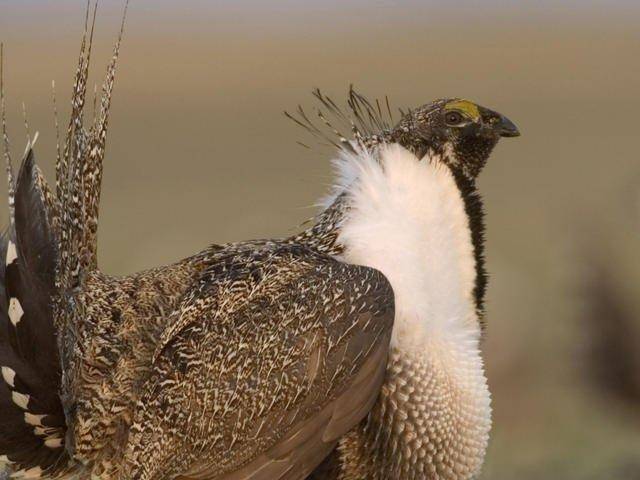Tuesday afternoon, Emery County Commissioners met for their regular board meeting at the Emery County Courthouse. One item on the agenda was the consideration and approval of a resolution on scientific integrity and greater sage-grouse management.
The Bureau of Land Management (BLM) and the U.S. Forest Service (USFS) are addressing greater sage-grouse Management in 98 public land management plans. The greater sage-grouse inhabits 186 million acres in eleven western states. The species is being considered for listing under the Endangered Species Act (ESA) despite greater sage-grouse populations that could reach 500,000 across the range. If they are listed, it could create economic and social consequences in rural western communities.
Western Energy Alliance is challenging the science that the U.S. Department of the Interior is using for the basis for its greater sage-grouse decision. Over the past few decades, states, counties and local governments have engaged in over 180 efforts to protect the greater sage-grouse across the West.
According to the conservation plan for greater sage-grouse in Utah, the plan is designed to protect high-quality habitat, enhance impaired habitat and restore converted habitat to support a portion of the range-wide population of greater sage-grouse necessary to eliminate threats to the species and negate the need for the listing of the species under the provisions of the federal ESA. The U.S. Fish and Wildlife Service’s (FWS) most recent finding on the need for a listing, issued in March, 2010, found that the listing of the greater sage-grouse was warranted on a range-wide basis, but that further action was precluded by higher ESA priorities of the service. The FWS is now bound by a court decree to review this decision by the end of 2015.
This plan is designed to eliminate the threats facing the sage-grouse while balancing the economic and social needs of the residents of Utah through a coordinated program that provides for incentive-based programs for private, local government and School and Institutional Trust Lands Administration (SITLA) lands, and a reasonable and cooperative regulatory programs on other state and federally-managed lands. Implementation of the plan requires a cooperative effort among local, state and federal agencies, working in concert with private interests.
Commissioners approved a resolution that six other counties, including Carbon and Uintah counties, have passed on the resolution of Scientific Integrity and Greater Sage-Grouse Management.

